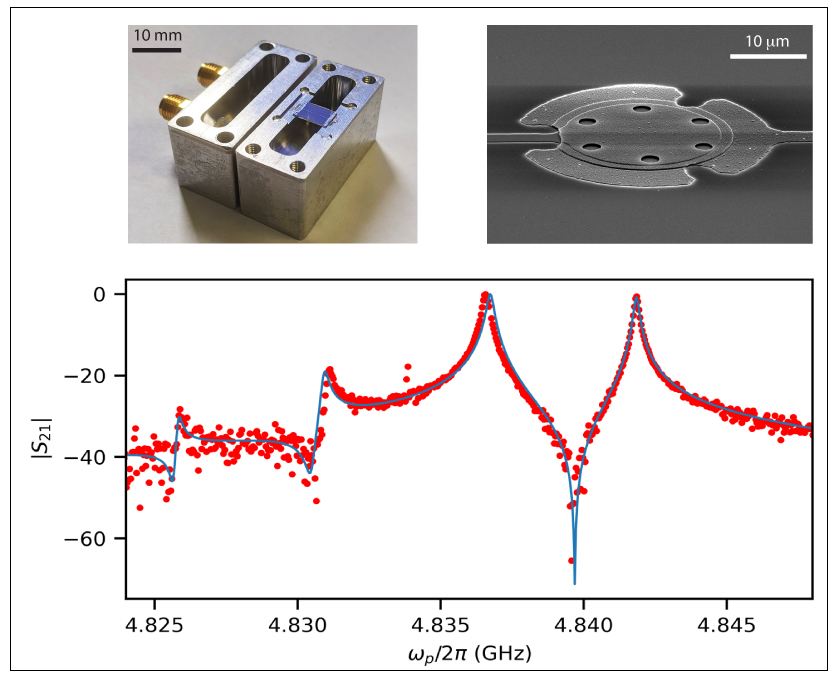Ultra-strong coupling between microwave photons and mechanical vibrations
Photons lack mass, but they do carry momentum when interacting with other objects. Although the individual momentum imparted by a single photon is minute, a coherent beam of light composed of numerous photons can collectively transfer significant momentum. This effect can be further enhanced by utilising an optical or microwave cavity, which confines light through multiple reflections before allowing its escape. In a high-quality-factor cavity, the momentum transfer is further magnified as each photon interacts multiple times before exiting.
Incorporating a mechanical resonator in a cavity enables the light to influence the motion of the resonator. Conversely, the resonator’s motion affects the light by altering its phase. This arrangement is termed as cavity-optomechanical system. By employing high-quality cavities, it becomes feasible to meticulously control and manipulate the motion of micron-sized mechanical resonators, even down to their quantum ground state.
A cavity optomechanical system effectively works as two parametrically coupled oscillators that exchange energy at a rate set by the coupling strength. In a new paper published Physical Review Letters, a team of scientists led by Vibhor Singh, Professor in the Department of Physics, IISc, has managed to develop a state-of-the-art cavity optomechanical setup, where they could couple microwave photons trapped in a 3-dimensional superconducting cavity to the vibration of a micron-scale drumhead-shaped mechanical resonator.
In this work, they have demonstrated that the coupling strength between them can be parametrically tuned and easily pushed to a regime where the superconducting cavity and mechanical vibration exchange energy at a rate similar to the mechanical vibration itself. They found that efforts to further increase the coupling rate, results into instabilities, and the system shows a plethora of unstable behaviour ranging from period doubling to chaotic oscillations of the system. According to them, this is the first time that the instabilities resulting from the ultra-fast exchange of energy between the microwave mode and mechanical phonons have been realised experimentally.
According to Soumya Ranjan Das, the lead PhD student in the study, such high-quality cavity optomechanical devices can find a variety of usages ranging from displacement and force sensors, storage of quantum signals, and narrow band quantum-noise limited amplifiers.

Caption: (Top-left) An image of the superconducting microwave cavity made from aluminium. (Top-right) A scanning electron microscope image of the drumhead-shaped mechanical resonator made from thin film of aluminium. (Bottom) The graph shows the measurement of transmission through the microwave cavity showing the hybridization of microwave photons with mechanical vibrations (phonons).
REFERENCE:
Das SR, Majumder S, Sahu SK, Singhal U, Bera T, Singh V, Instabilities near Ultrastrong Coupling in a Microwave Optomechanical Cavity, Physical Review Letters (2023).
https://journals.aps.org/prl/abstract/10.1103/PhysRevLett.131.067001
LAB WEBSITE:
https://sites.google.com/view/sqd-lab/home



